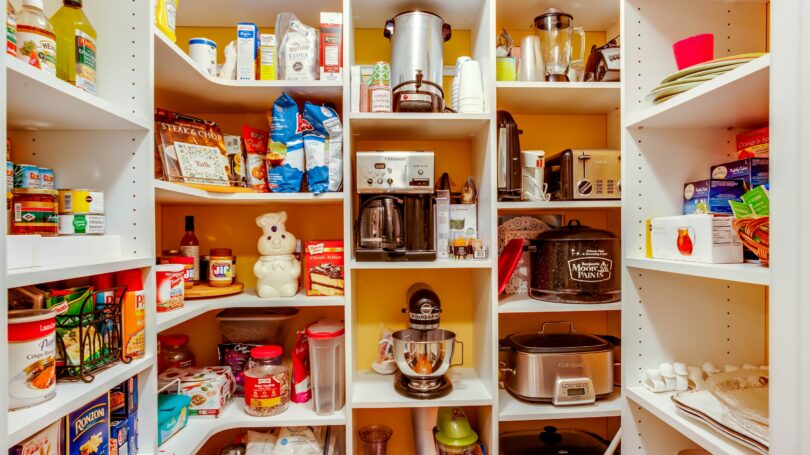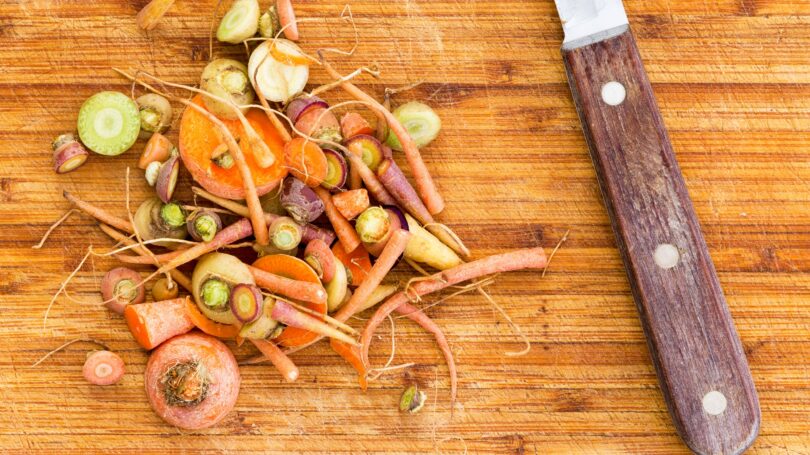Money-Saving Frugality Tips From the Great Depression Era
![]()
DateOctober 26, 2021TABLE OF CONTENTS

Get a $350 Cash Bonus.
Open a BMO Harris Premier™ Account online and get a $350 cash bonus when you have a total of at least $7,500 in qualifying direct deposits within the first 90 days of account opening. Expires 5/12. Conditions Apply.
We can learn a lot from our grandparents and great-grandparents.
These older generations lived a very different life from what most of us live today. They were frugal, resourceful, and forced to adapt to some truly challenging circumstances. They lived by the adage “Use it up, wear it out, make it do, or do without” on a daily basis.
While we can’t control what happens in the world, we can control how we respond to whatever situations we find ourselves in. Part of this means learning how to be more self-sufficient and live more frugally, just like our ancestors did.
Money-Saving Tips From the Past That Are
Still Relevant Today
1. Use What You Have

During World War II, many foods were rationed, which meant you could only purchase them if you had a government-issued coupon. Some of the most sought-after foods were meat, cheese, sugar, coffee, canned fish, and canned milk.
Today, it’s easy to run out to the store to pick up ingredients for a recipe we want to make for dinner. But those unnecessary trips can be costly, especially if you wind up making impulse buys while you’re out. Get creative with your recipes and learn how to use food substitutions to save a trip to the store.
For example, you can use the following substitutions from The Gardening Cook in recipes when you’re missing one ingredient:
- 1 teaspoon lemon juice = 1/2 teaspoon vinegar
- 1 cup sour cream = 1 cup milk + 1 1/3 tablespoons vinegar
- 1 cup butter = 1/2 cup buttermilk + 1/2 cup applesauce
- 1/2 cup soy sauce = 4 tablespoons Worcestershire sauce + 1 tablespoon water
- White wine = equal amount of apple juice or chicken broth
- Red wine = equal amount of grape juice or beef broth
- 1 cup mayonnaise = 1 cup plain yogurt
- 1 tablespoon fresh herbs = 1 teaspoon dried herbs
- 1 cup sugar = 2/3 cup agave nectar
- 1 egg = 1/2 banana or 1/4 cup applesauce
- 1 cup buttermilk = 1 cup plain yogurt
- 1 teaspoon poultry seasoning = 3/4 teaspoon sage + 1/4 teaspoon thyme
Using what you have on hand instead of running to the store for one or two items will help you save money on groceries, as well as saving time and gas.
Pro tip: When you head to the grocery store, make sure you have the Fetch Rewards app on your phone. With Fetch Rewards, you can scan your grocery receipt and earn points you can redeem for gift cards to your favorite stores.
2. Avoid Food Waste

Another perk of using what you have means is that it helps you avoid food waste.
You can throw wilting vegetables or no-longer-fresh herbs into soup or meatloaf rather than tossing them in the garbage. You can freeze unused meat before it expires. You can turn stale bread into breadcrumbs.
There are endless ways to use up your leftovers or food that’s passed its prime, and learning how to do this saves you money over time. Professional organizer and productivity specialist Andrea Dekker offers additional tips to salvage food that’s on its way out.
You can also use vegetable scraps like roots, tops, ends, skins, and peelings to make outstanding homemade stock for soups. According to The Kitchn, vegetable scraps that work well to make stock include:
- Celery
- Onion
- Carrot
- Parsnips
- Green beans
- Corn cobs
- Garlic
- Scallions
- Bell peppers
- Mushrooms
- Eggplant
- Squash
- Asparagus
- Beet greens
- Fresh herb stalks from parsley, basil, and cilantro
Store these scraps in a zip-close bag in the freezer. When you have 4 cups of scraps, toss them into 2 quarts of water and put them on to boil. Keep in mind that not all vegetables make good stock. Some veggies have a flavor that’s too overpowering. Vegetables to avoid include:
- Cabbage
- Brussels sprouts
- Broccoli
- Cauliflower
- Turnips
- Rutabagas
- Artichokes
Many vegetables can be regrown from their scraps. For example, vegetables like onions, celery, lemongrass, cabbage, potatoes, and garlic are just a few vegetables that can be sprouted and then grown in the garden or in a bowl of water. The website DIY & Crafts has a comprehensive post on how to do this.
You can also save and reuse oil and grease, especially bacon grease, which Bon Appétit calls “liquid gold” because it’s so flavorful and will last forever if you render it and store it correctly. Bon Appétit has instructions on how to do this.
Money-Saving Frugality Tips From the Great Depression Era
DateOctober 26, 2021TABLE OF CONTENTS

Get a $350 Cash Bonus.
Open a BMO Harris Premier™ Account online and get a $350 cash bonus when you have a total of at least $7,500 in qualifying direct deposits within the first 90 days of account opening. Expires 5/12. Conditions Apply.
We can learn a lot from our grandparents and great-grandparents.
These older generations lived a very different life from what most of us live today. They were frugal, resourceful, and forced to adapt to some truly challenging circumstances. They lived by the adage “Use it up, wear it out, make it do, or do without” on a daily basis.
While we can’t control what happens in the world, we can control how we respond to whatever situations we find ourselves in. Part of this means learning how to be more self-sufficient and live more frugally, just like our ancestors did.
Money-Saving Tips From the Past That Are
Still Relevant Today
1. Use What You Have

During World War II, many foods were rationed, which meant you could only purchase them if you had a government-issued coupon. Some of the most sought-after foods were meat, cheese, sugar, coffee, canned fish, and canned milk.
Today, it’s easy to run out to the store to pick up ingredients for a recipe we want to make for dinner. But those unnecessary trips can be costly, especially if you wind up making impulse buys while you’re out. Get creative with your recipes and learn how to use food substitutions to save a trip to the store.
For example, you can use the following substitutions from The Gardening Cook in recipes when you’re missing one ingredient:
- 1 teaspoon lemon juice = 1/2 teaspoon vinegar
- 1 cup sour cream = 1 cup milk + 1 1/3 tablespoons vinegar
- 1 cup butter = 1/2 cup buttermilk + 1/2 cup applesauce
- 1/2 cup soy sauce = 4 tablespoons Worcestershire sauce + 1 tablespoon water
- White wine = equal amount of apple juice or chicken broth
- Red wine = equal amount of grape juice or beef broth
- 1 cup mayonnaise = 1 cup plain yogurt
- 1 tablespoon fresh herbs = 1 teaspoon dried herbs
- 1 cup sugar = 2/3 cup agave nectar
- 1 egg = 1/2 banana or 1/4 cup applesauce
- 1 cup buttermilk = 1 cup plain yogurt
- 1 teaspoon poultry seasoning = 3/4 teaspoon sage + 1/4 teaspoon thyme
Using what you have on hand instead of running to the store for one or two items will help you save money on groceries, as well as saving time and gas.
Pro tip: When you head to the grocery store, make sure you have the Fetch Rewards app on your phone. With Fetch Rewards, you can scan your grocery receipt and earn points you can redeem for gift cards to your favorite stores.
2. Avoid Food Waste

Another perk of using what you have means is that it helps you avoid food waste.
You can throw wilting vegetables or no-longer-fresh herbs into soup or meatloaf rather than tossing them in the garbage. You can freeze unused meat before it expires. You can turn stale bread into breadcrumbs.
There are endless ways to use up your leftovers or food that’s passed its prime, and learning how to do this saves you money over time. Professional organizer and productivity specialist Andrea Dekker offers additional tips to salvage food that’s on its way out.
You can also use vegetable scraps like roots, tops, ends, skins, and peelings to make outstanding homemade stock for soups. According to The Kitchn, vegetable scraps that work well to make stock include:
- Celery
- Onion
- Carrot
- Parsnips
- Green beans
- Corn cobs
- Garlic
- Scallions
- Bell peppers
- Mushrooms
- Eggplant
- Squash
- Asparagus
- Beet greens
- Fresh herb stalks from parsley, basil, and cilantro
Store these scraps in a zip-close bag in the freezer. When you have 4 cups of scraps, toss them into 2 quarts of water and put them on to boil. Keep in mind that not all vegetables make good stock. Some veggies have a flavor that’s too overpowering. Vegetables to avoid include:
- Cabbage
- Brussels sprouts
- Broccoli
- Cauliflower
- Turnips
- Rutabagas
- Artichokes
Many vegetables can be regrown from their scraps. For example, vegetables like onions, celery, lemongrass, cabbage, potatoes, and garlic are just a few vegetables that can be sprouted and then grown in the garden or in a bowl of water. The website DIY & Crafts has a comprehensive post on how to do this.
You can also save and reuse oil and grease, especially bacon grease, which Bon Appétit calls “liquid gold” because it’s so flavorful and will last forever if you render it and store it correctly. Bon Appétit has instructions on how to do this.

































![Lieutenant-Colonel Robert Rogers (7 November 1731 – 18 May 1795) was a British Army officer and frontiersman. Born in Methuen, Massachusetts, he fought in King George’s War, the French and Indian War and the American Revolutionary War. During the French and Indian War, Rogers raised and commanded Rogers’ Rangers, a ranger unit trained for carrying out asymmetric warfare.[2][3](https://www.cowboyron.com/wp-content/uploads/2022/05/1262463_580743685323360_2133853937_o1-1-150x150.jpg)
















![Billie Joe Armstrong & Norah Jones – Silver Haired Daddy Of Mine [Music Video]](https://www.cowboyron.com/wp-content/uploads/2022/11/Al_St._John1-100x100.jpg)























